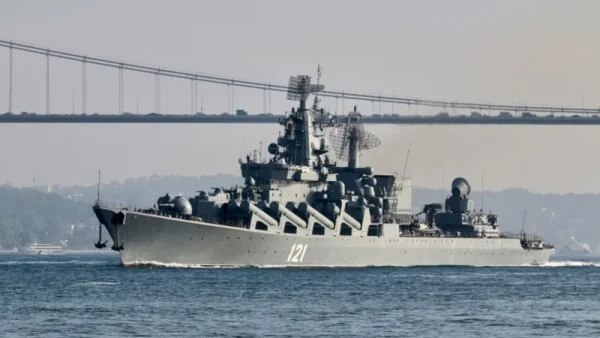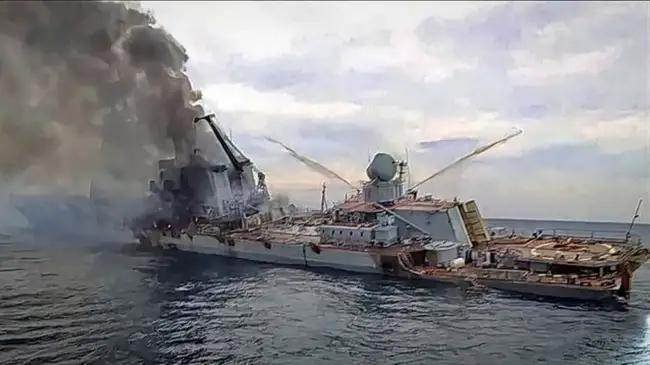On February 24, 2022, the same day Russia launched its full-scale invasion of Ukraine, two Russian warships—the missile cruiser Moskva and the patrol ship Vasily Bykov — sailed toward Snake Island, a strategically located Ukrainian outpost in the Black Sea. The small island, also known as Zmiinyi Island, lies about 35 kilometers (22 miles) off the southern coast of Ukraine and holds significant military and symbolic value. Upon arrival, the crew of the Moskva issued a radio demand to the 13 Ukrainian border guards stationed there, ordering them to surrender and abandon the island.

The photo is courtesy of Reuters
After this act of defiance, the Moskva and the Vasily Bykov opened fire, bombarding the island with artillery shells and cruise missiles launched from offshore. Despite their bravery, the Ukrainian soldiers were vastly outgunned and were ultimately captured by Russian forces. Initial reports suggested that the border guards had been killed, but it was later confirmed they had been taken prisoner and were eventually returned to Ukraine in a prisoner exchange. With Snake Island under Russian control, the Kremlin declared it a major strategic victory, as the location offered potential control over shipping lanes and military movement in the northwestern Black Sea.
But the tide would soon begin to turn.
On April 13, 2022, less than two months after the initial assault, the Moskva—the flagship of Russia’s Black Sea Fleet—was patrolling the Black Sea when it was targeted by two Ukrainian R-360 Neptune anti-ship missiles. Developed by Ukraine and based on the Soviet Kh-35 missile, the Neptune has a range of approximately 280 kilometers (174 miles) and is designed to destroy warships up to 5,000 tons. The missiles struck the Moskva, igniting a fire onboard and reportedly detonating ammunition stored in the ship’s magazines. Despite Russia’s initial claim that a fire had caused the explosion by accident, U.S. intelligence and independent sources confirmed that Ukrainian missiles had struck the vessel.
By the next day, April 14, two Russian tugboats were attempting to tow the heavily damaged Moskva back to port in Sevastopol. However, the damage proved too extensive. The cruiser eventually capsized and sank in stormy seas. The Russian Ministry of Defense later confirmed the loss of the ship but remained vague about the number of casualties. Ukrainian sources claimed dozens, possibly hundreds, of Russian sailors were killed, though Russia has not disclosed an official death toll. The sinking of the Moskva was both a symbolic and strategic blow to Russia, representing the loss of its most powerful warship in the region and weakening its naval dominance in the Black Sea.
As of 2025, Ukraine has reportedly sunk or heavily damaged at least 28 Russian warships, according to statements from the Ukrainian Navy and various intelligence sources. These attacks have employed a combination of Neptune missiles, Harpoon missiles supplied by Western allies, and domestically developed sea drones—unmanned surface vessels capable of stealth attacks against larger ships. Many of these strikes have targeted ships stationed in the ports of Sevastopol and Novorossiysk, as well as those patrolling near occupied Crimea.
The sinking of the Moskva was the first time since the Russo-Japanese War (1904–1905) that Russia had lost a flagship in combat—the last being the battleship Petropavlovsk, which sank after striking a Japanese mine. The loss shook Russian naval morale and underscored Ukraine’s increasing capacity to strike far beyond its coastline. It also contributed to Russia’s decision to reposition much of its Black Sea Fleet further east and south to reduce exposure to Ukrainian weapons. As of 2025, several key Russian vessels remain under threat, and the Black Sea has transformed from a symbol of Russian power projection into a contested and volatile theater of modern naval warfare.

























